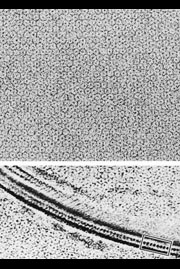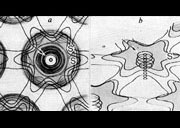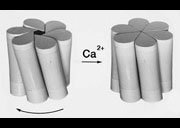Gap junctions
Specialised regions of contact known as gap junctions exist between apposed plasma membranes of communicating cells. These junctions mediate and regulate the passage of ions and small molecules between the cell interiors. They are composed of proteins, called connexons, which are embedded in the apposed membranes, in register, and linked to each other. Three-dimensional structures determined from two conformations of connexon - one in the presence of, and the other in the absence of, calcium – suggested a simple way by which this channel may open and close. It involves small tilting and sliding motions of adjacent subunits along their lines of contact: an iris-like mechanism preserving the hydrophobic partitioning between parts inside and outside the lipid bilayer.
Key publications:
Unwin, P.N.T. and Zampighi, G. Structure of the junction between communicating cells. Nature 283, 545-549 (1980). (pdf)
Unwin, P.N.T. and Ennis, P.D. Calcium-mediated changes in gap junction structure: evidence from the low-angle x-ray pattern. J. Cell Biol. 97, 1459-1466 (1983). (pdf)
Unwin, P.N.T. and Ennis, P.D. Two configurations of a channel-forming membrane protein. Nature 307, 609-613 (1984). (pdf)



